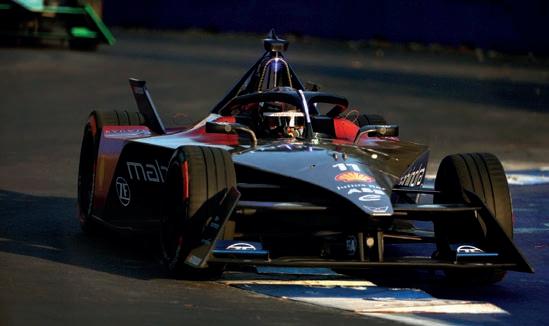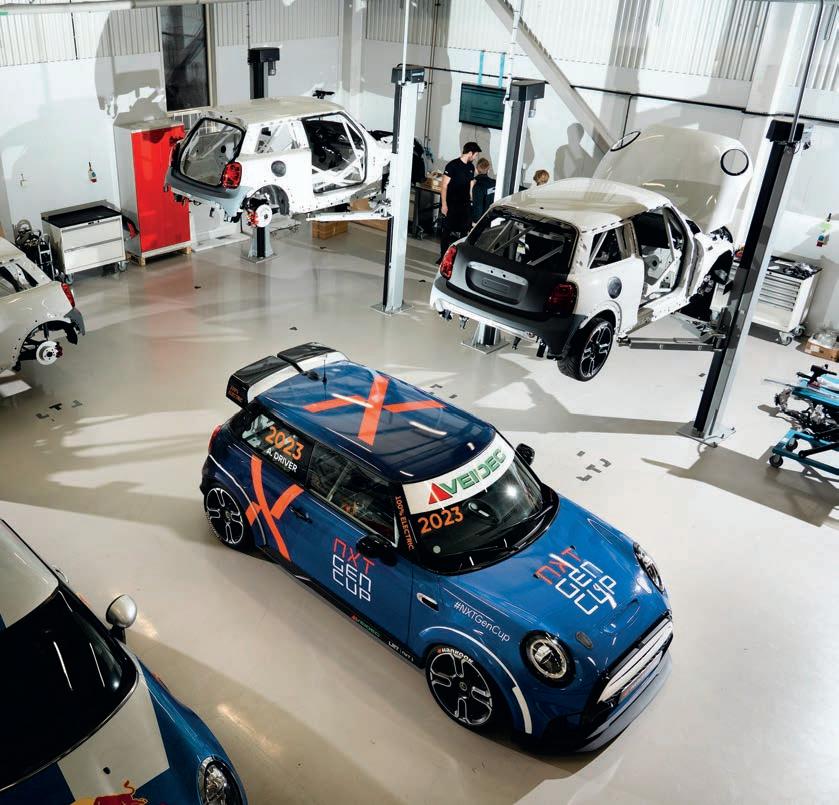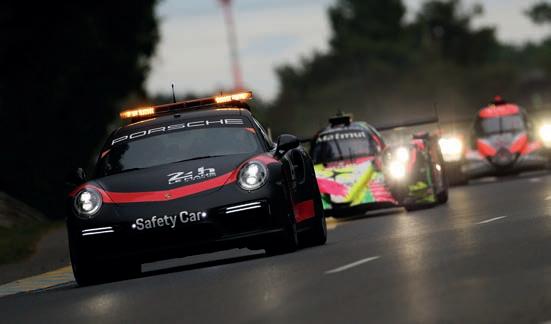
11 minute read
Stage craft
With hybrid development issues persisting, the leading teams in the WRC are now running closer than ever
By LAWRENCE BUTCHER
The 2022 WRC season saw a dominant performance by Toyota’s Kalle Rovanperä, with the 22-yearold Finn becoming the youngest champion in the sport’s history, and the first of its new hybrid era. However, over the course of the year, though Toyota remained imperious, Hyundai, in particular, made considerable performance strides with its i20, turning what looked like a disaster at the beginning of the year into a rally-winning machine.
Due to the way development works under the WRC regulations, updates must be introduced via the use of ‘jokers’, meaning manufacturers tend to add parts for the next season before the year is out, in order to make best use of their allocation. Jokers can only be added at fixed points in the year, with submissions having to be made on 1 January, 1 April, 1 July and 1 October. Though, as will be covered later, there are ways to circumvent these restrictions.

‘We had five jokers for 2022, which had to be used up by December [’22],’ explains Toyota technical director, Tom Fowler. ‘We used some of those during the year and then we put the last ones into place ready for Monte Carlo this year. We’ve then still got our 2023 jokers available, but used up everything that was possible in 2022 to make the ’23 car.’
Power and control
One of the main areas teams focused their development efforts on through 2022 was control of the hybrid system. Contributing an extra 100kW of boost on top of the ICE, mapping power delivery from the MGU and, just as importantly, energy recovery under braking, it’s clearly an important topic. With road conditions constantly changing from corner to corner, rally drivers need to have supreme confidence that their throttle and brake inputs will translate to a consistent response from the car every time.
Each manufacturer was allowed to homologate three deployment and three energy recovery maps, shared across all of its drivers. These are then fixed unless a team chooses to play a joker.
The maps must work on both tarmac and gravel stages, and be flexible enough to cater to each driver’s unique style. Drivers can switch between maps over the course of a rally, but not during a stage.
Talking in late 2022, while still deputy team principal (before Cyril Abiteboul joined the team in January 2023), Hyundai’s Julien
Moncet admitted that at the start of ’22 his drivers found the hybrid hard to manage, and the power delivery was not very refined.
‘The system was not predictable, and was disturbing how they were driving,’ he explained. ‘This is what we have improved the most [in 2022]. We are not using the system at all in the same way as we used to.
‘Of course, the rules are the same, but we have learned a lot. It is not about putting the power down suddenly, you have to think about the grip, the speed and how much energy you have. We have brought a lot of updates in this area.’
He also pointed out that the banning of fresh air-based anti-lag systems for the ICE further complicated the task of keeping the cars as driveable as possible.
From M-Sport technical director, Chris Williams’, perspective, the hybrid was already well understood from early 2022.
‘Our philosophy hasn’t changed at all from the start,’ he remarked towards the end of 2022. ‘We put in an enormous amount of effort to be up and running early. To try and understand the system, we developed a few tools to be able to train the drivers, and also to be able to analyse the feedback and the results quite quickly.
‘By the time we got to Monte Carlo, we were match fit and race ready with hybrid. We haven’t changed philosophy [since then], just a few parameters, probably more trying to keep the FIA happy than anything else.’
For the first year of the new rules, teams were permitted an extra joker specifically covering the hybrid, an understandable inclusion given the number of unknowns at the time. This was in addition to a general software update joker, which covers the whole car.
‘When we had to homologate the three maps in January, we’d never driven in Sardinia, or Ypres, for example. There was a lot of test information missing against the base software, so most of the learning we’ve done in season has been about improving the mapping so it’s more flexible,’ said Fowler.
Having already used one joker (as of Ypres in August 2022), Toyota deployed its remaining joker on a revised tarmac specific map for the final two rounds of 2022. ‘That brought together all of our tarmac learning from across the season.’ Fowler explained, before adding, ‘of course, if it was completely open, I’m pretty sure we would have a different mapping for every single rally of the season, and probably two or three for each rally…’
Since their introduction, the spec hybrid has not gained a reputation as trouble free. According to Williams, early componentbased issues were dealt with quickly, and by mid-way through 2022, ‘if something was going to fail, it’s failed.’
Persistent bugs
However, there remain some persistent bugs in the system software, relating to issues such as failure modes that can stop the hybrid operating based on false alarms.
‘I think they just missed some of the interactions going on with the units,’ said Williams of the situation.
This forced teams to develop workarounds using the somewhat limited control they have via software.
‘There are still ongoing issues that we kind of manage, that you’ll never see,’ noted Williams on Rally Ypres. ‘Unless it’s a critical bit, we have the ability to reset the system really fast, on an automatic reset. If there is a false call in the system – bang – we can reset and the driver probably doesn’t even notice.’
Even after an off season to update and conquer some of these issues, it seemed problems persisted into 2023. ‘Are we progressing in a manner and at the speed that we’re happy with? Probably not,’ stated Williams at Rally Sweden.

Hybrid supplier, Compact Dynamics, did make efforts over the off season to improve the reliability of its units, but it would appear these were rushed, and the introduction not handled as teams would like.
‘Coming late to the teams with a fix and saying run this on the event makes us nervous,’ said Williams. Understandably, both he and his opposite numbers at Hyundai and Toyota don’t want to make mission critical changes they haven’t been able to sign off on via the usual dyno testing and other reliability checks.

‘If we are delivered something, and we are reasonably confident that it is minor, or insignificant, then maybe we will run it. But we were twice given stuff we are unhappy to run,’ added Williams.
Running updates
One of the problems, explained Williams, is that the rules require teams run the hybrids within the parameters and recommendations provided in the documentation for the systems.
‘As Compact Dynamics update the hybrid documentation, we have to be very careful – whatever they’ve done – that we now need to abide by that. If they make a change we’re not happy with, or there is a strategy change in there, we need to be on top of that.’
Just prior to Rally Sweden, just such an update occurred and the teams, unhappy with not being able to prove the changes beforehand, had no choice but to object to their implementation.
Fowler was somewhat more vocal about the issues faced by the teams. Toyota was an early casualty when Elfyn Evans was forced to retire from the second round of the 2022 season in Sweden, after the lights showing the hybrid system status failed. If the parts in question had been under Toyota’s control, heaven and earth would have been moved to get to the root of the issue, but they’re not.
‘When we encounter a problem, we hound the life out of it until we’re sure it’s fixed. And if we don’t fix it, and it happens again, we’re incredibly pissed off with ourselves. To have a part where we don’t have that ability, where we can’t strip it open and see with our own eyes exactly what’s happened, yeah, it’s incredibly frustrating. And I think this makes the glitches more difficult to handle.’
Fowler’s frustration at the processes in place to handle problems with the system was tangible, and his team’s only recourse has been to analyse the circumstances around failures in an attempt to identify trends that may help them be avoided in the future.
‘It’s quite an interesting piece of engineering in many ways, because there’s a lot of information we don’t have about the box. Some stuff we know, because we have to know, because it interacts with our systems, but there’s more we don’t know than we do.
‘Quite a lot of the reliability-type improvements we’ve made have been somewhat statistical,’ he continued. ‘This is not a way of engineering we would prefer to do in other areas of the car.
‘Looking at things statistically, we ask how likely is it to go wrong if we’re doing x, y and z, and then try to minimise the things we see as potentially causing these things to happen more regularly. Then it’s a case of trying to avoid those situations, even if they are within the operating scope of the unit.
‘If we see that some areas of operation are riskier than others, we try to avoid them.’
Aero updates
Rolling into 2022, only Toyota and Hyundai brought notable aerodynamic updates to their cars, the latter causing significant controversy in the paddock.
Starting with Toyota, its introduction of new aero parts spanned across the ’22-’23 seasons, thanks to the way the aforementioned joker system works. On Rally Estonia in ’22, the team deployed a new rear wing design that featured the addition of extra winglets at the furthest extremities. This change, said Fowler, was closely linked to a second element, which did not arrive until 2023 – the removal of the Yaris’ ‘elephant ears’ cooling scoops.

Removing the scoops greatly improved airflow along the side of the car, making the new rear wing design more effective, particularly in conjunction with a variety of wing mirror designs (which are not constrained by jokers and can be updated as and when teams wish).
Fowler confirmed that the large scoops run through 2022 were an insurance policy against potential unknowns with the hybrid.
‘The hybrid systems were delivered to the teams quite lastminute.com,’ he says. ‘So we had to be really safe on the installation and we had a lot of headroom, both in terms of cooling and also packaging.
‘[In late 2021] we’d never seen the box in real life before, how all the cooling pipes would be routed to it, and so on. We had a chassis there ready with a rear cooling package with all the pipes and everything ready to plug in but didn’t have the physical box until quite late in the development.’
Over the course of 2022, Toyota optimised its cooling package and strategy, culminating in the revised specification introduced for the 2023 season. ‘We did a much nicer job of the packaging, which had knock-on effects on areas like the rear suspension installation on lots of different topics,’ Fowler explained.



Not all of the changes to the cooling at the rear required a joker to complete, as many of the internal parts fall under what is called a variant option, in effect a free part.
‘We built up a package using all of the homologation options, but only using one joker,’ says Fowler. ‘During last year, we were changing those variants around rally by rally, to make the cooling under the rear end suitable for conditions as we went. In some cases that was necessary, but in other cases, it was more a reaction to things. We were able to package all of that into something more generic for the whole season and then concentrate on more important things.’
Badge engineering
Hyundai, meanwhile, brought a sizeable update package to Monte Carlo at the start of 2023, clearly influenced by Toyota’s developments, leading Fowler to state, ‘the i20 is now a Toyota with a Hyundai badge.’
Starting at the front of the car, the i20 received a heavily revised nose, which worked in conjunction with a new profile to the front wheelarches. This was coupled with a rear wing that, as Fowler alluded to, bears more than a passing resemblance to that of the Toyota.
However, not all in the service park were happy with the updates; both the fact the team was permitted what are clearly quite extreme deviations from the road car form, and the manner in which the modifications were introduced.
Speaking in Sweden, Williams observed: ‘It’s an odd scenario. Let’s just say between the teams and the FIA, there’s been some discussion. I’m not sure Hyundai are aware of the discussions taking place, but yeah, we’ve certainly had some.’
The first issue centred around the way Hyundai introduced its update, via what is knowns as an ‘out of session’ use of jokers. As outlined earlier, jokers can normally only be introduced at fixed points in the season, following a tightly prescribed procedure. Part of this involves rival teams being able to see the updates in advance of homologation and make any comments they feel are pertinent.
An ‘out of session’ update circumvents this process completely and is really only intended for reliability updates that need to be brought in urgently. ‘They used the out of session quite well,’ admitted Williams. ‘We didn’t see their stuff until it was homologated, at which point we went what the hell? Then began the discussion of how is that legal?’
Bitter pill
For M-Sport, the somewhat extreme nature of Hyundai’s design was a tough pill to swallow. The team had to instigate an almost ground-up re-design of its 2022 car in late 2021, following a heated debate with the FIA over rules interpretation, which saw much time and money wasted. ‘We may be a bit bitter at some of the things that were not permitted back in late 2021. To now see some of those on the [Hyundai] car is a little bit disappointing,’ said Williams.
The new season did not bring with it a fresh aero package from M-Sport though, as Williams explained, this was not for lack of trying. ‘We spent a lot of time last year working on an aero upgrade package, quite a big one,’ says Williams. ‘When we got pretty much to the end of the study, sat down and looked at all the numbers we had, we weren’t confident in the gains against some of the assumptions we’d made.’
Considerable effort and resource were expended on the study, and Williams remains pragmatic about the outcome. ‘In one respect it is quite disappointing but, on the other hand, what it kind of said is we’re not too bad [where we are],’ he says.
‘We have certain targets we’re aiming for, which were not improving enough. We were not getting the gains in the areas we wanted. There was potential to make some gains, but not ones that would make a difference. In effect, what we were looking for, we’ve not found.’
At time of writing, the 2023 season was two rallies old, and the field seems closer than ever. Hyundai had most certainly forged a potent machine from the i20, while M-Sport with its new star driver, Ott Tänak, secured a resounding win in Sweden.
Toyota, long the performance yardstick, will have its work cut out to keep ahead this year, and it looks all to play for in the driver and manufacturer stakes.














